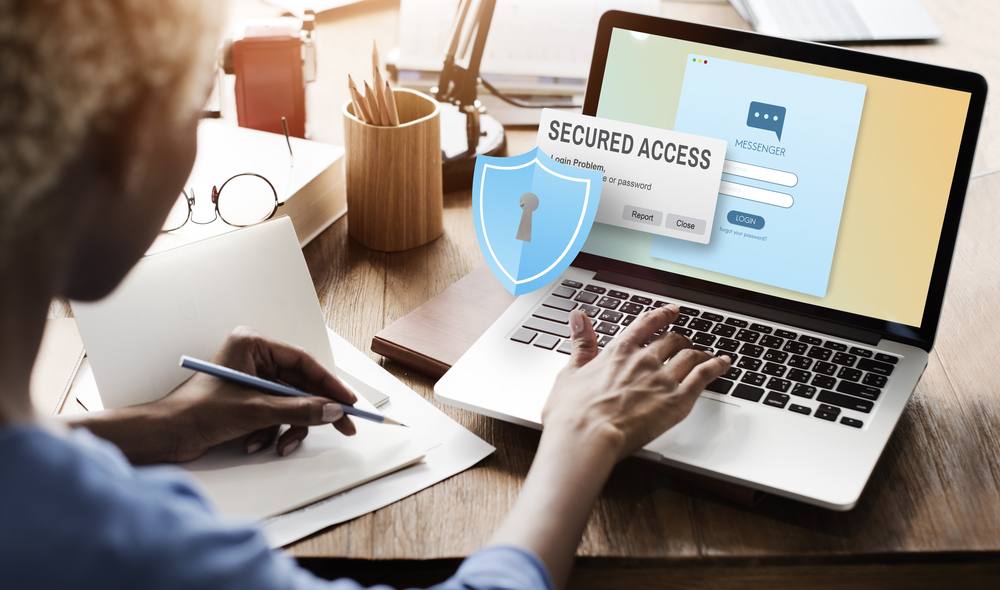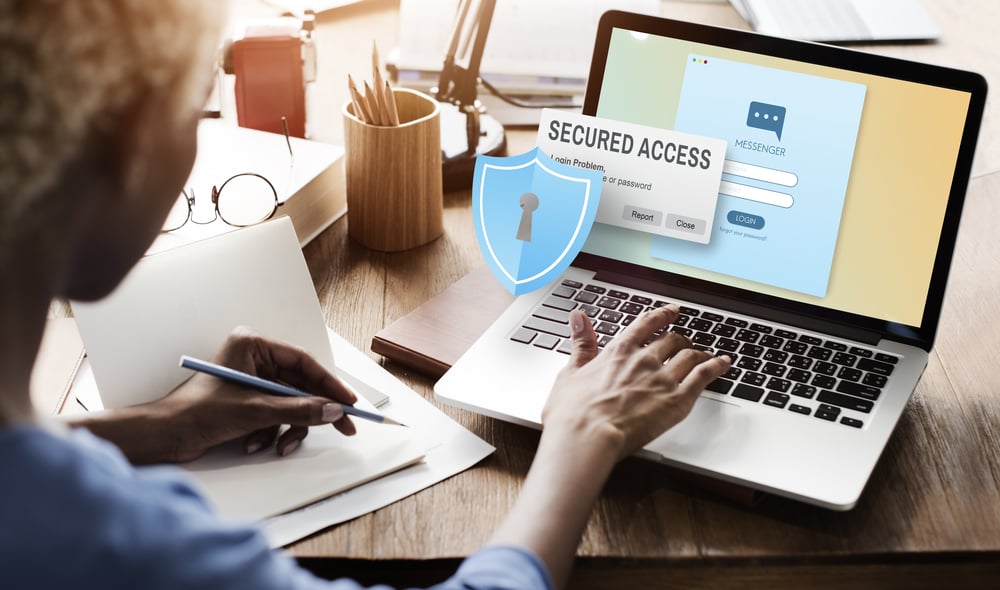
Protect Your Business with Multi-Factor Authentication

While many business owners assume that their passwords are protected with a simple username-password combination, that is sadly no longer the case. In fact, in today’s technologically advanced and digital-based society, multi-factor authentication (MFA) is necessary to ensure that all your business and personal information is properly protected. It’s important to note that your business reputation is important, and a reputation can be changed overnight with the nefarious acts of one hacker set to cause harm.
You can be locked out of your company's social media accounts while hackers post damaging information. Your bank accounts can be drained quicker than you can imagine, and once you regain access to them, the danger not only to your clients but to your reputation will already be done. Multi-factor authentication should be a non-negotiable part of your cyber security plan. Because of the extra steps involved and the perceived hassle, many people shy away from implementing MFA company-wide. It begs the question: Is multi-factor authentication effective? Is it worth the perceived inconvenience?
Microsoft found that an astounding 99.9% of all account compromise attacks could be blocked or prevented simply by implementing an MFA. This means you can prevent the worst from happening if you are wise at the outset and set up an MFA within your company to protect your sensitive and valuable data. Also known as two-factor authentication or 2-step verification, it is a system that works when passwords alone won’t.
The Problem With Passwords
You might wonder why passwords alone won’t do the trick of keeping your information out of the wrong hands. Well, to put it simply it is no longer enough of an obstacle. This is because many people use the same passwords for many accounts, so once a hacker has discovered that password, they can access all sorts of information. It’s also a faulty security system because previous employees know company passwords. This means a disgruntled employee can do some damage to your business through the use of well-known passwords. Remember, it doesn’t have to be a hacker working out of a foreign nation to do your business harm.
A Solution: Multi-Factor Authentication (MFA)
Before moving further, it’s important to answer the question, what does multi-factor authentication or MFA mean exactly? Simply put, it is a two-factor authentication process that will notify you if a password has been changed. It also requires additional steps for individuals to gain access to certain information. It can even lock would-be hackers out thanks to the safety measures in place. The level of security your company implements will largely determine what steps are involved in your own MFA process. The following is an example of some authentication methods that can be used:
- Information: The most common type, this type of MFA involves answering a specific question(s) correctly.
- A Device: Examples include: an authentication code being sent to a device or a microchip in an ID badge being scanned.
- A Biometric Scanner: More advanced systems use fingerprints, voice recognition, or even eye scan security.
Set Internal Guidelines
Multi-factor authentication does work. Once you determine it’s time to implement MFA into your company policy, it’s important to set up internal guidelines. This will require your employees to set up MFA on all the accounts they use for your company. It’s a good idea to bring in an IT person or an HR professional to oversee this process and aid you in training employees as well as help answer any questions that might arise. It’s a good idea to run security checks periodically as well to make sure that all employees are adhering to the guidelines you have set up. Now, more than ever with the increase of remote work options, keeping a good check on security is vitally important.
MFA Rules
Keep the following MFA guidelines in mind when it comes to creating a good system:
- Make sure passwords are 15 characters or more. Don’t go too short.
- Implement MFA, ensuring that the password alone isn’t the only line of defense between the bad guys and valuable or sensitive information.
- Use the latest version of internet browsers and software. These are regularly updated and if you don’t update them to the latest version, your information isn’t as safe as it could possibly be with the latest version.
There are countless ways that hackers can override your system and gain access to your personal and business accounts. While these can be monetarily costly to be sure, they can also be embarrassing and harm the reputation you have spent years building. Just consider how many people have had their Facebook accounts hacked and had erroneous messages sent to those on their friend’s list that seem to come from them, saying hurtful and embarrassing things. An irritation when it happens to your personal account, the reputation damage from it happening to a business account can be devastating.
Imagine going to work one morning and finding that you are locked out of your database or bank accounts. Ransomeware is increasing, and the fallout from a ransom attack can be unsurmountable. The damage from a breach of secure customer data not to mention the ransom paid to a hacker or legal fees to fight them plus the loss of trust and credibility in the marketplace can put a business out of business. The destruction of a data breach far outweighs the "inconvenience" of extra steps at login. We believe it's a must in today’s business world.
Bottom Line: It’s Worth The Trouble
Admittedly, having to update not only your business information but your personal accounts utilizing an MFA system isn’t always that fun. It can seem troublesome and needlessly difficult. However, the first time a hacker gains access to your personal and/or business accounts and they begin to do damage to your hard-earned reputation, it will become crystal clear that MFA is worth the trouble of implementing. In addition, once you get used to it, it will become second nature and seem a natural part of your long-in process. Therefore, it’s most certainly worth the trouble!


